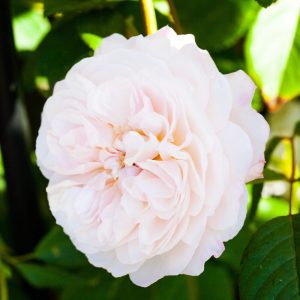Description
Rhododendron ‘Scintillation’ is a multi-award-winning hybrid that is well known for its impressive flowers, performance, and hardiness. The plant produces beautiful, pale pink funnel-shaped flowers with a paler center and toffee-colored speckles. These blooms appear in late spring or early summer and are a real showstopper in any garden. This variety of rhododendron can grow up to 1.5m tall and has glossy dark green leaves that provide a beautiful contrast to the striking flowers. It is a larger growing rhododendron, making it an excellent choice to add a burst of color to a shady area, garden border, sheltered glade, or screen. It is a hardy plant that can withstand colder temperatures and is ideal for the UK climate. With its impressive blooms and reliable performance, Rhododendron ‘Scintillation’ is a must-have for any garden.
Key Facts
- Common Name(s):Rhododendron ‘Scintillation’
- Hardiness:Fully hardy
- How big will I get? Rhododendron ‘Scintillation’ can grow to a height of 2m and a spread of 2m.
- Did You Know That:The name “rhododendron” comes from the Greek words “rhodon,” meaning “rose,” and “dendron,” meaning “tree”?
Plant Calendar
A rough guide to how this plant will change through the year.
| Jan | Feb | Mar | Apr | May | June | July | Aug | Sept | Oct | Nov | Dec | |
| Flowering Time |  |
 |
||||||||||
| Foliage Colour |  |
 |
 |
 |
 |
 |
 |
 |
 |
 |
 |
 |
| J | F | M | A | M | J | J | A | S | O | N | D |
 |
 |
||||||||||
 |
 |
 |
 |
 |
 |
 |
 |
 |
 |
 |
 |
Care Guide

Soil Requirements
Rhododendron ‘Scintillation’ prefers moist but well-draining soil. This plant requires acidic soil to thrive and cannot grow in neutral or alkaline soil conditions.

Best Position
Rhododendron ‘Scintillation’ prefers a sheltered position and likes the sun but not too much of it, so an area that is partially shaded is perfect.

Maintenance
Rhododendron ‘Scintillation’ is fairly low maintenance and doesn’t require any pruning.

Pest, Diseases and Wildlife
Rhododendron ‘Scintillation’ can have problems with aphids, vine weevil and scale insects, it can be vulnerable to certain diseases such as powdery mildews and bud blast. It is also known to attract bees and butterflies. It is considered to be toxic.





